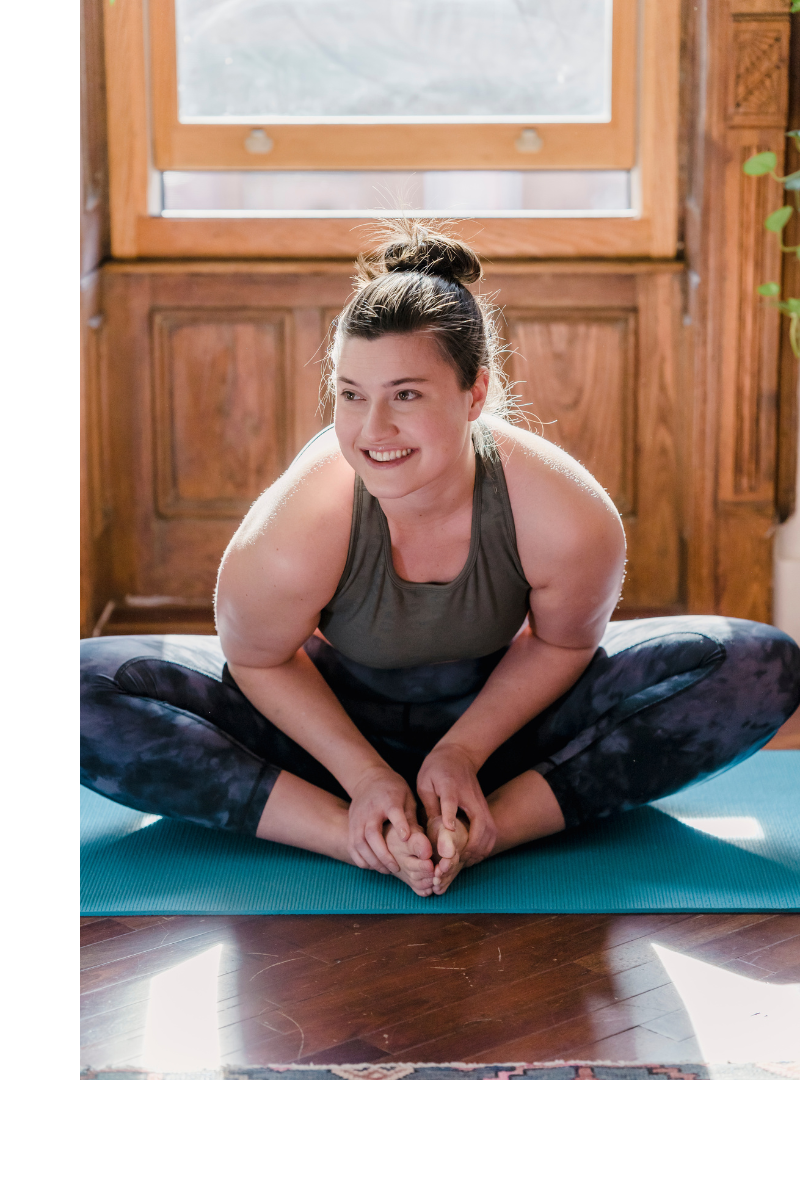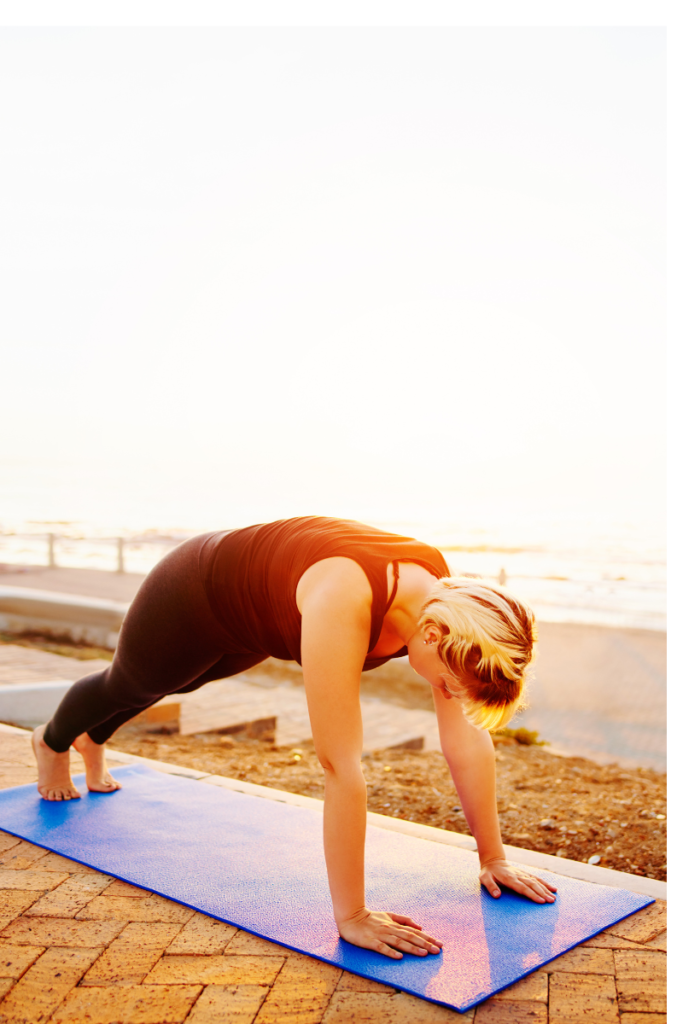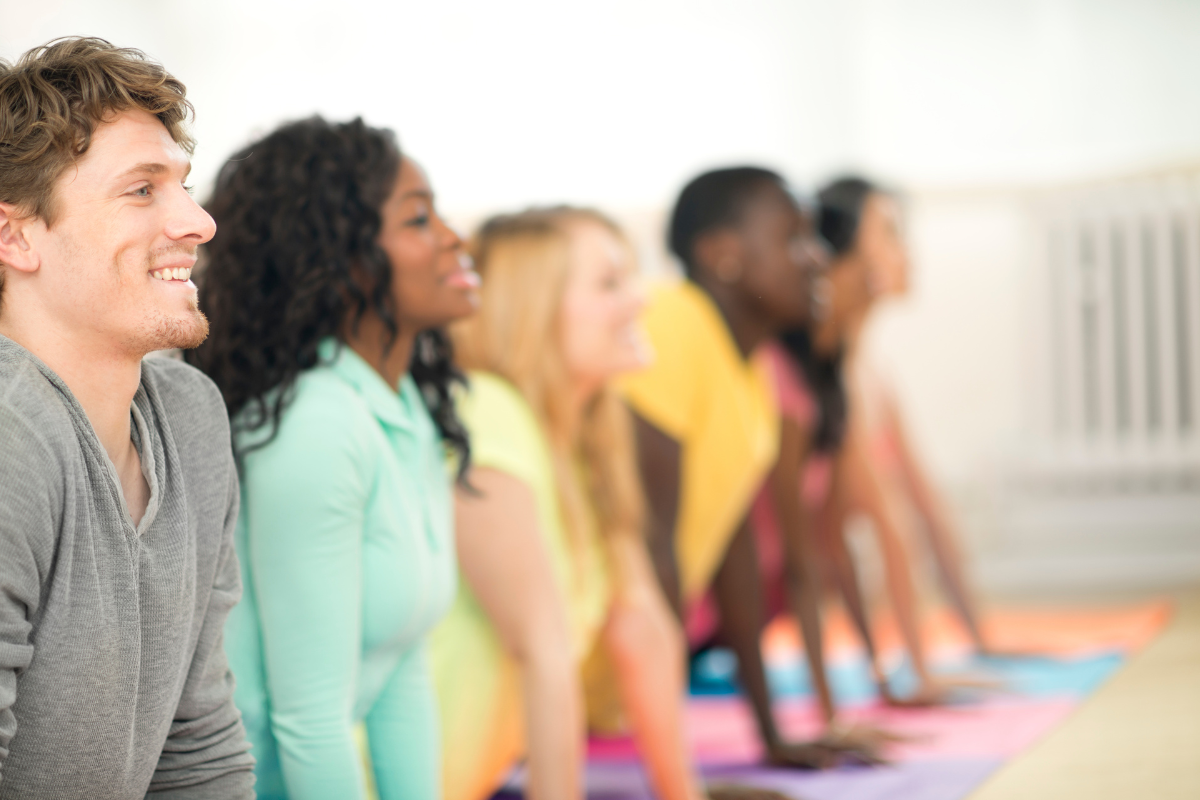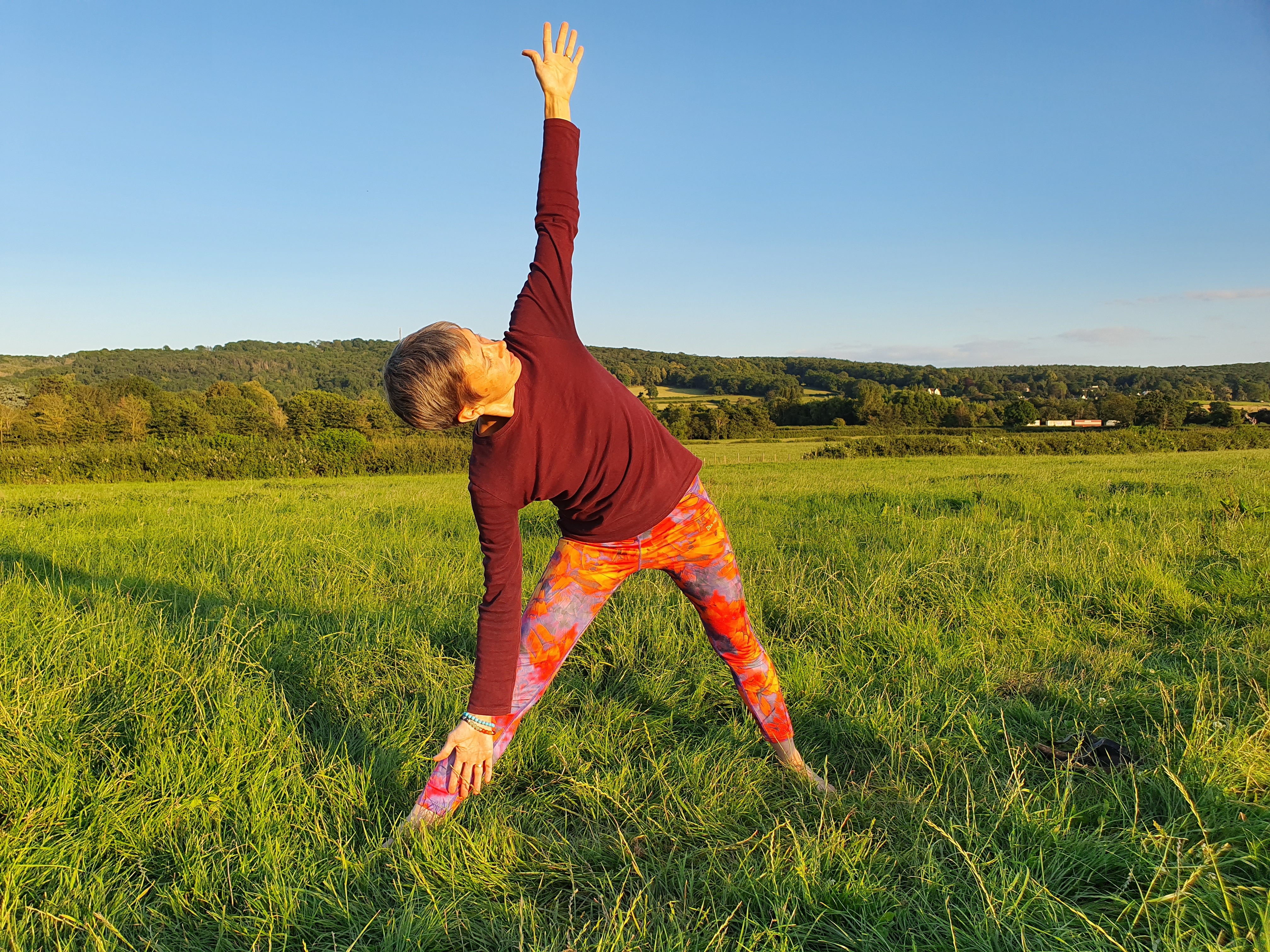What are the first thoughts that come into your head when someone says “yoga”? There are as many answers to this as there are people – but if you’re new to yoga, then at least some of your thoughts are probably fuelled by the many myths and misconceptions surrounding yoga: and whether you’ve never done any yoga before, or you’ve had some experience of it, some of these myths may be holding you back from stepping on to the mat and giving it a go, or perhaps preventing you from really embracing all the benefits that yoga can offer.
So here’s my attempt to demystify and dispel three common myths about yoga. I hope this helps to clear some of the obstacles that may be holding you back from letting yoga into your life :
1. You have to be flexible to do yoga
A quick look on social media is enough to understand how easy it is to hold the belief that yoga is just for bendy people: images and videos of people getting their bodies into all kinds of extreme positions do little to help us mere mortals, with our tight hamstrings / hips / shoulders / backs (delete or add as appropriate), to think of yoga as something that is accessible to us, let alone relevant or helpful.
Worse still, if we do attend a yoga class, we might end up having this very belief confirmed. My early experience of yoga did just this. I found myself straining and struggling to get my body into the deep back bends and forward folds that other students seemed to glide into with ease – and left each class feeling stiffer and less flexible than ever.

From this experience, I realise now that I carried with me a belief that I simply wasn’t flexible enough to do yoga, and that this stopped me from trying out any other yoga classes for many years. The only exception was pre-natal yoga during my pregnancy, but I perceived this differently: as well as allowing for the fact that hormones during pregnancy caused my body to feel a little more flexible, I also viewed my pregnancy yoga class as a ‘modified’ form of yoga that used props and support to help us access gentle poses in safe ways.
Thanks to the teacher of the yoga class I attended many years later, I now know that this supported, gentler approach is not at all confined to pre-natal yoga: there are many styles of yoga, and countless yoga classes and teachers that encourage students to work patiently and kindly with their bodies, and teach them to use props, support, and variations of poses that are suitable for their bodies. And the good news is that, as you start to establish a yoga practice in this way, what you’ll likely notice is that gradually, over time, your flexibility will improve.
So, no, you definitely don’t need to be flexible to do yoga – but if you do it in a way that’s right for your body, there’s a very good chance that you’ll become more flexible over time as a result.
2. Yoga won’t help me build strength / muscle tone
Like many people, before I started practicing yoga, I perceived it as mainly being stretching exercises, with a bit of mindfulness thrown in. I came to it because I had tight hamstrings from running, tight hips and shoulders from working at a desk on a computer all day, and high levels of stress from being so busy. Yoga has been transformative for me in relation to all these things – but what I wasn’t expecting was the positive impact it’s had on my muscle strength and tone.

In a typical yoga practice, the physical poses and sequences of movements, as well as some of the breathwork exercises, create a whole range of opportunities to activate muscles in all kinds of ways. Repetitive movements help to build up strength, and the holding of poses, often with the ground or the wall used as resistance, build muscle tone. Just because there’s no weight lifting in yoga, it definitely doesn’t mean yoga won’t help you improve your muscle strength and tone. It might even function as a great complement to weight-based training, or as an alternative to or preparation for it, if lifting weights isn’t a safe option for you right now.
3. Only women / only young people do yoga
I’ve cheated a bit here and included two common myths in one! And actually, the point here is a broader one about a general lack of diversity in the public representation of yoga – whether this is around gender, age, ethnicity, body type, social background – the list goes on. Again, social media has a part to play in perpetuating this myth: I just did a quick search for “yoga” on Instagram, and of all the images of people doing yoga that this produced, every single person was white, nearly all were young, nearly all were slim, most were female – again, the list could go on. It’s no wonder, then, that those who don’t see themselves in the images and ideas of yoga around them don’t think yoga is for them. And as those who feel excluded from the yoga “world” are therefore less likely to practice yoga, this myth is perpetuated whenever anyone not fitting the stereotyped image of yoga does attend and finds themselves alongside students from whom they might feel very different.
The irony of this is that yoga, as a personal practice, is about as inclusive as you can get. If you are a human being, you can do yoga. Yoga offers a whole array of practices: this includes a wide range of physical practices, from sequences of movements, to poses that are held whilst standing, sitting, or lying down. But yoga also includes, to mention just two more of its many facets, breathwork practices, and meditation practices that can help improve our mental, emotional and physical wellbeing.

(I want to be very clear that I’m talking about the practice of yoga here, not the yoga industry or yoga communities that have much still to do in order to become more inclusive. There is hope, though – great examples local to me of people who are seeking to break down some of the stereotypes associated with yoga can be found at the Bristol Yoga Roots project, and Yoga Dad).
It can also be helpful, whenever you find yourself thinking that “yoga isn’t for me”, to remind yourself that yoga is an individual experience. What I mean is that, while an outside observer might see a class full of yoga students all holding the exact same physical pose, the reality is that each student is actively tuning into and working with their own experience of that pose in that moment. That might involve using the breath in a particular way, focussing on a particular part of the body, modifying the pose to suit them – or something else. The point is that a yoga practice is personal. Whatever the person on the mat next to you is doing, or is looking like as they do it, is their practice – not yours. And whatever your are doing on your mat is your practice – not theirs.

So when I say that yoga is for everyone, I really do mean it: there is a yoga style, practice, class, and teacher out there for everyone. Don’t be put off by media images and ideals, and don’t be put off by classes you’ve attended that haven’t felt the right fit for you. If online yoga videos or classes are an option, maybe try using specific search terms that will help you find a class that feels more inclusive for you. You could take the same strategy when searching for in-person classes – and don’t be afraid to contact the teacher directly and ask them specific questions about the inclusivity of their classes.
A yoga class or series for beginners might also be a good place to start as, in my experience, these tend to attract a more diverse range of students and to offer more individual support. And you don’t need to be a beginner to gain and learn lots from a beginners’ class, by the way! Keep going until you find the support that’s right for you, to help you establish a yoga practice that works for you.
If you'd like to explore yoga in a safe, supportive, and friendly environment, check out my Yoga for Beginners course - you'll join me for six sessions of quality teaching and focussed support, and receive additional takeaways, including a class recording and a guided meditation recording. It's an ideal way to give yoga a try, and to practice yoga at a gentle pace, as you really get to know some of the key poses and practices in ways that work for you.

Are any of these myths holding you back from trying out, or fully embracing, yoga? Does anything I’ve talked about in this article help you to let go of any misconceptions you have about yoga? Or is there still resistance coming up? Do share your thoughts and responses in the comments.